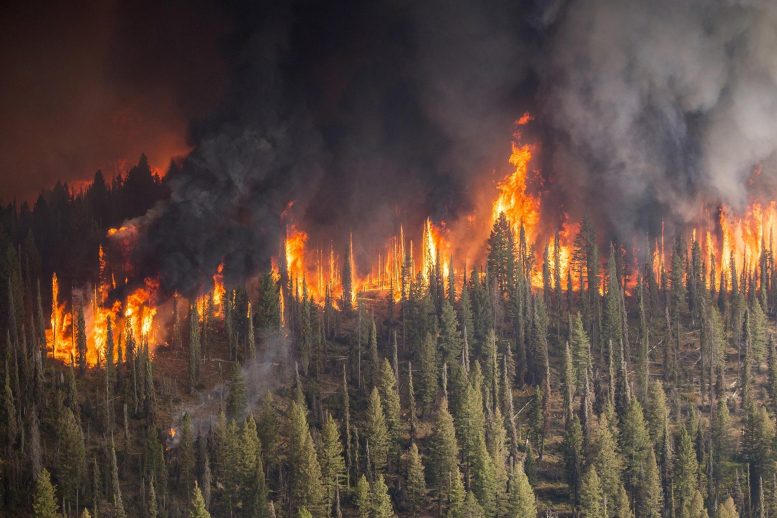
A new study finds that exposure to wildfires increases the risk of cancer.
Living near regions prone to wildfires may boost the risk of developing lung cancer and brain tumors.
By looking at a population of nearly 2 million people over the course of 20 years, scientists found that exposure to wildfires is linked to a higher incidence of brain tumors and lung cancer.
A new McGill University study indicates a greater prevalence of lung cancer and brain tumors in those who have been exposed to wildfires. The research, which followed nearly two million Canadians for 20 years, is the first to look at how proximity to forest fires impacts cancer risk.
“Wildfires tend to happen in the same locations each year, but we know very little about the long-term health effects of these events. Our study shows that living in close proximity to wildfires may increase the risk of certain cancers,” says Scott Weichenthal, an Associate Professor in the Department of Epidemiology, Biostatistics, and Occupational Health at McGill University.
The research, published in The Lancet Planetary Health, found that persons who lived within 50 kilometers of wildfires had a 10% greater incidence of brain tumors and a 4.9% higher incidence of lung cancer than those who lived farther away.
Impacts of climate change on human health
Wildfires are expected to become more common, intense, and last longer as the climate changes — and they are increasingly recognized as a worldwide health hazard. “Many of the pollutants emitted by wildfires are known human carcinogens, suggesting that exposure could increase cancer risk in humans,” says Jill Korsiak, a Ph.D. student in Professor Weichenthal’s lab who led the analysis.
Wildfires typically occur in similar regions each year, and as a result, people living in nearby communities might be exposed to carcinogenic wildfire pollutants on a chronic basis, warn the researchers.
Lingering harmful pollutants
In addition to impacts on air quality, wildfires also pollute aquatic, soil, and indoor environments. While some pollutants return to normal concentrations shortly after the fire has stopped burning, other chemicals might persist in the environment for long periods of time, including heavy metals and hydrocarbons. “Exposure to harmful environmental pollutants might continue beyond the period of active burning through several routes of exposure,” adds Professor Weichenthal.
Still, more research is necessary to understand the complex mixture of environmental pollutants released during wildfires, note the researchers. They also note that further work is needed to develop more long-term estimates of the chronic health effects of wildfires.
Reference: “Long-term exposure to wildfires and cancer incidence in Canada: a population-based observational cohort study” by Jill Korsiak, Lauren Pinault, Tanya Christidis, Richard Burnett, Michal Abrahamowicz and Scott Weichenthal, 1 May 2022, The Lancet Planetary Health.
DOI: 10.1016/S2542-5196(22)00067-5









Be the first to comment on "Living Near Wildfires Can Increase Your Risk of Cancer"